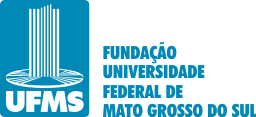Use este identificador para citar ou linkar para este item:
https://repositorio.ufms.br/handle/123456789/12734Registro completo de metadados
| Campo DC | Valor | Idioma |
|---|---|---|
| dc.creator | Alisson Rodrigues Santori | - |
| dc.date.accessioned | 2025-10-03T18:23:52Z | - |
| dc.date.available | 2025-10-03T18:23:52Z | - |
| dc.date.issued | 2025 | pt_BR |
| dc.identifier.uri | https://repositorio.ufms.br/handle/123456789/12734 | - |
| dc.description.abstract | This study analyzes the relationship between the floodplain and the Paraná River channel, seeking to understand how the hydrological regime, morphological features, and lateral connectivity processes structure and transform the functioning of the floodplain. The central objective was to characterize the current hydromorphological dynamics of the floodplain in a section of the upper Paraná River, integrating the analysis of the hydrological regime, geomorphological features, and the connectivity relationships among sub-environments. To this end, a methodology was applied based on the integration of hydrological data from part of the post-dam historical series, the use of theoretical frameworks for the recognition of morphological features, and the use of remote sensing and geoprocessing geotechnologies to identify connectivity patterns. The results reveal that the dynamics of the floodplain are controlled by the variability of the hydrological regime and by the presence of peculiar morphologies, whose interaction conditions the lateral connectivity between channel and floodplain. Distinct response patterns of these features or sub-environments were identified, ranging from permanently connected areas, seasonal connections, to isolated sectors. This spatial heterogeneity directly influences the circulation of water, sediments, and organic matter, defining the degree of ecological functionality of the floodplain. It is concluded that this study contributes to the understanding of the mechanisms governing the functioning of the upper Paraná River floodplain, and that its methodology represents a tool applicable to other Brazilian fluvial systems, supporting management and environmental conservation. | - |
| dc.language.iso | pt_BR | pt_BR |
| dc.publisher | Fundação Universidade Federal de Mato Grosso do Sul | pt_BR |
| dc.rights | Acesso Aberto | pt_BR |
| dc.subject | Geomorofogia Fluvial | - |
| dc.subject | Regime Hidrológico | - |
| dc.subject | Planície de Inundação | - |
| dc.subject | Conectividade | - |
| dc.subject | Sensoriamento Remoto. | - |
| dc.title | RELAÇÕES DE CONECTIVIDADE E FUNCIONAMENTO ESTRUTURAL (HÍDRICO) DA PLANÍCIE DE INUNDAÇÃO DO ALTO RIO PARANÁ | pt_BR |
| dc.type | Tese | pt_BR |
| dc.contributor.advisor1 | Jose Candido Stevaux | - |
| dc.description.resumo | Este estudo analisa a relação entre a planície de inundação e o canal do rio Paraná, buscando compreender como o regime hidrológico, as feições morfológicas e os processos de conectividade lateral que estruturam e transformam o funcionamento da planície. O objetivo central foi caracterizar a dinâmica hidromorfológica atual da planície de inundação em um trecho do alto rio Paraná, integrando a análise do regime hidrológico, das feições geomorfológicas e as relações de conectividade entre subambientes. Para isso, aplicou-se uma metodologia baseada na integração de dados hidrológicos em parte da série histórica pós-barragem, o uso de bases teóricas para o reconhecimento de feições morfológicas e uso de geotecnologias de sensoriamento remoto e geoprocessamento para identificar os padrões de conectividade. Os resultados revelam que a dinâmica da planície é controlada pela variabilidade do regime hidrológico e pela presença de morfologias peculiares, cuja interação condiciona a conectividade lateral entre canal e planície. Identificaram-se padrões distintos de resposta dessas feições ou subambientes, variando desde áreas permanentemente conectadas, conexão sazonal e setores de isolamento. Essa heterogeneidade espacial reflete diretamente na circulação de água, sedimentos e matéria orgânica, definindo o grau de funcionalidade ecológica da planície. Conclui-se que este estudo permite compreender os mecanismos de funcionamento da planície de inundação do alto rio Paraná e sua metodologia representa uma ferramenta aplicável em outros sistemas fluviais brasileiros, contribuindo para o manejo e conservação ambiental. | pt_BR |
| dc.publisher.country | Brasil | pt_BR |
| dc.publisher.initials | UFMS | pt_BR |
| Aparece nas coleções: | Programa de Pós-graduação em Geografia (Campus de Três Lagoas) | |
Arquivos associados a este item:
| Arquivo | Tamanho | Formato | |
|---|---|---|---|
| TESE_FINAL.pdf | 39,33 MB | Adobe PDF | Visualizar/Abrir |
Os itens no repositório estão protegidos por copyright, com todos os direitos reservados, salvo quando é indicado o contrário.

